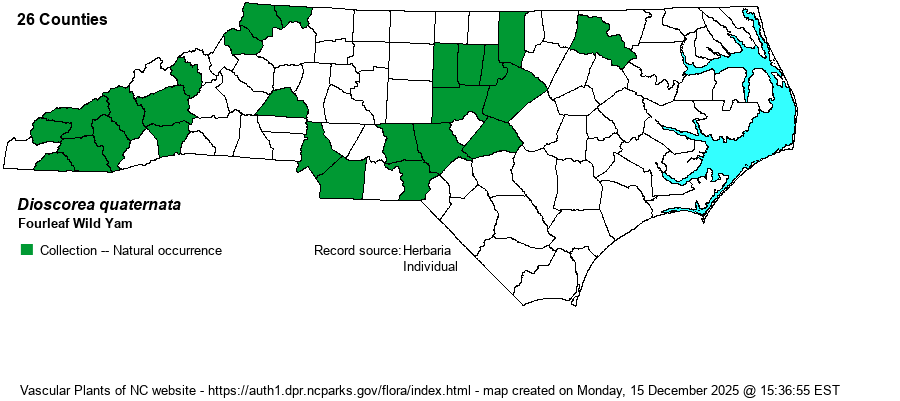| Author | Walter ex Gmelin | |
| Distribution | Primarily in the Mountains and Piedmont. D. villosa occurs almost exclusively in the Coastal Plain and Sandhills.
Northeastern PA to IL and MO, south to northwestern FL, LA, and OK. | |
| Abundance | Frequent on the landscape. Population sizes not recorded. | |
| Habitat | Mesic, usually base-rich, hardwood and hardwood-conifer slopes, alluvial woods and slopes by brownwater rivers. |
| Phenology | Flowers May-June; fruits Aug-Oct. | |
| Identification | A larger and more robust plant than D. villosa, the stems and leaves glabrous. Leaves broader than those of D. villosa, dark green to bluish green above, glaucescent beneath (as opposed to wholly ordinary green in villosa). The inflorescence is much more diffuse than that of D. villosa. Basal leaves typically grow in a whorl of 4 (or more) in quaternata but singly or at most 3 in close proximity but not a whorl in villosa. | |
| Taxonomic Comments | Some authors (ie, RAB, FNA, Weakley 2025) lump quaternata within villosa. Fernald (1950) and Gleason (1952) split them. However, no genetic work has been done and field observers do see a cline in characters between the 2 species.
| |
| Other Common Name(s) | | |
| State Rank | S4 | |
| Global Rank | G5 | |
| State Status | | |
| US Status | | |
| USACE-agcp | | |
| USACE-emp | | |

